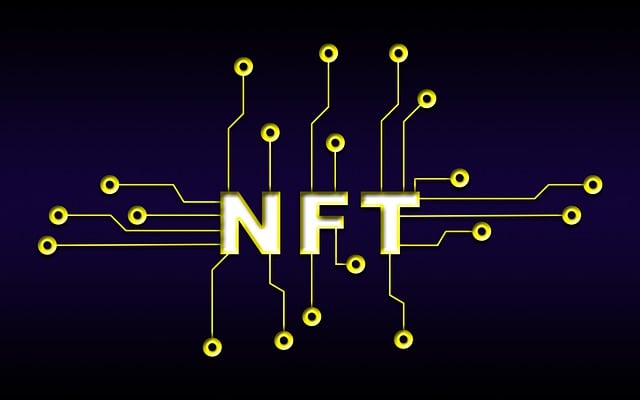Creating a Crypto Trading Bot: An In-Depth Guide for Automated Trading Success
Author: Jameson Richman Expert
Published On: 2025-07-28
Prepared by Jameson Richman and our team of experts with over a decade of experience in cryptocurrency and digital asset analysis. Learn more about us.
In the rapidly evolving world of cryptocurrency, creating a crypto trading bot has become an essential strategy for traders seeking to automate their trading strategies, maximize profits, and reduce emotional biases. The high volatility, 24/7 trading cycle, and market complexity make manual trading not only challenging but often less efficient. Developing an effective trading bot involves a multifaceted approach, combining technical expertise, market insights, and strategic planning. This comprehensive guide explores every critical aspect of building a successful crypto trading bot—from initial setup and algorithm design to deployment, optimization, and ongoing adaptation—supported by industry best practices and real-world insights.

Understanding the Fundamentals of Crypto Trading Bots
A crypto trading bot is a sophisticated software system designed to execute buy and sell orders automatically based on predefined rules, technical indicators, sentiment analysis, or machine learning models. These systems leverage real-time market data, historical price patterns, order book depth, and sometimes on-chain analytics to identify trading opportunities with speed and precision that surpass human capabilities. The primary goal is to capitalize on market inefficiencies, trends, arbitrage opportunities, and liquidity gaps while minimizing manual intervention.
Core benefits include:
- Automation of repetitive tasks, freeing traders to focus on strategy refinement and research.
- Elimination of emotional biases such as fear, greed, and hesitation that impair manual trading decisions.
- Ability to operate continuously—24/7—capturing opportunities even during off-hours, weekends, and holidays.
- Rapid response to market movements, including instant order placement, modification, and cancellation, which is crucial in volatile markets.
However, creating a profitable trading bot demands more than coding skills; it requires a deep understanding of market dynamics, robust risk management, and resilient system architecture. Well-designed bots are adaptive, capable of responding to changing market conditions, managing downside risks, and handling technical failures such as API outages or network disruptions. Incorporating fail-safes, redundancy, and error handling is crucial for operational integrity and safety.
Choosing the Right Exchange: The Foundation for Success
The exchange you select forms the backbone of your trading bot’s effectiveness. It provides the API infrastructure, liquidity, security framework, and market access needed for seamless operation. While exploring lesser-known or emerging exchanges might seem attractive for lower fees or niche markets, it often introduces significant risks such as API instability, limited liquidity, restricted trading pairs, or subpar security standards.
Key considerations when choosing an exchange include:
- API Reliability and Documentation: Ensure the exchange offers a stable, well-documented API with sufficient rate limits to support your trading frequency. Well-maintained APIs reduce the risk of disconnections, missed trades, or data inaccuracies.
- Liquidity and Trading Volume: High liquidity minimizes slippage, ensures that large orders are filled at expected prices, and reduces market impact, especially for sizable positions.
- Security Features: Look for robust security measures such as two-factor authentication (2FA), withdrawal whitelists, cold storage options, and comprehensive security audits. Protecting your assets is paramount to prevent theft or unauthorized access.
- Range of Trading Pairs and Markets: Access to a broad spectrum of trading pairs—including major cryptocurrencies, altcoins, stablecoins, futures, options, and derivatives—enables strategy diversification and risk mitigation.
Prominent exchanges like Binance, Coinbase Pro, and Kraken are popular choices, offering extensive APIs, high liquidity, and strong security standards. For advanced strategies involving derivatives, margin trading, or futures, selecting exchanges that support these features can significantly expand your tactical options. Additionally, consider the exchange’s API latency, historical uptime, and community support to ensure reliable operations.
Designing Your Trading Algorithm: From Basic to Advanced Strategies
The core of your trading bot is the algorithm that generates buy and sell signals. Initially, many developers leverage simple strategies using technical indicators such as Moving Averages (MA), Relative Strength Index (RSI), Bollinger Bands, and MACD. These tools are accessible and provide a solid foundation for trend detection and momentum analysis. However, relying solely on basic indicators can lead to false signals during high volatility or sideways markets.
To craft more robust and adaptive algorithms, consider adopting a modular architecture comprising these components:
- Data Acquisition: Collect real-time and historical market data through exchange APIs or third-party data providers. High-quality, low-latency data—such as order book snapshots, trade history, and on-chain metrics—is critical for accurate signal generation.
- Signal Generation: Apply technical indicators, pattern recognition (like head-and-shoulders or double tops/bottoms), sentiment analysis, or machine learning models (classification or regression) to identify trading opportunities. Combining multiple signals—for example, RSI combined with MACD crossovers—can enhance decision accuracy.
- Risk Management: Embed mechanisms like stop-loss, take-profit, and position sizing to control downside risks and optimize risk-reward ratios. Using volatility-adjusted position sizing—such as based on ATR—ensures your exposure adapts to market conditions.
- Order Execution: Implement efficient order handling—placing, modifying, and canceling orders based on current signals and market conditions—while minimizing slippage and latency. Consider using smart order routing if multiple exchanges are involved.
Libraries such as ccxt facilitate seamless exchange integration, while TA-Lib provides a comprehensive suite of technical analysis tools. Combining these with custom logic enables strategies like breakout trading, arbitrage, mean reversion, and trend following. Additionally, integrating machine learning frameworks (e.g., TensorFlow, PyTorch) can facilitate predictive models based on historical and on-chain data.
Backtesting your strategies against extensive historical data is vital for assessing profitability, robustness, and risk metrics. Platforms such as TradingView, Backtrader, and QuantConnect offer sophisticated environments for testing and fine-tuning strategies. Proper backtesting helps prevent overfitting and ensures strategies perform reliably across different market cycles.

Implementing Effective Risk Management
Risk management is the backbone of sustainable trading. Early mistakes—such as overleveraging, neglecting drawdowns, or ignoring volatility—can lead to significant losses. I found that integrating protective measures like stop-loss orders, take-profit levels, dynamic position sizing, and diversification is essential for longevity.
Advanced risk techniques include:
- Trailing Stops: Dynamically adjust stop-loss levels as the asset price moves favorably, locking in gains while allowing room for further upside. This approach helps in capturing trending moves and reducing losses during reversals.
- Hedging Strategies: Use derivatives, options, or offsetting positions to mitigate downside risk during volatile periods or unexpected market shocks.
- Portfolio Diversification: Distribute capital across multiple assets or strategies to prevent overexposure to a single market or token. Correlation analysis can help identify uncorrelated assets for diversification.
- Volatility-Adaptive Position Sizing: Adjust trade sizes based on real-time volatility metrics like ATR or VIX indices to prevent over-leveraging during turbulent periods.
Real-time market monitoring, volatility analysis, and on-chain metrics enable your bot to adapt position sizes and risk parameters dynamically, maintaining a balanced risk-reward profile regardless of market turbulence.
Backtesting and Paper Trading: Validating Your Strategies
Before deploying with real funds, rigorous backtesting against historical data is indispensable. It helps evaluate profitability, drawdowns, and robustness under various market conditions—including bullish rallies, bearish crashes, and sideways consolidation. Effective backtesting involves simulating trades with your algorithm over multiple timeframes and market environments to identify potential weaknesses and optimize parameters.
Tools like TradingView, Backtrader, and custom frameworks allow thorough analysis and parameter tuning. Be cautious of overfitting by using out-of-sample testing and cross-validation techniques.
Following successful backtests, paper trading simulates live market conditions without risking real capital. This phase uncovers issues related to slippage, order execution latency, and system bugs, ensuring your bot performs reliably in current market environments. Setting up a sandbox environment or utilizing exchange testnets is highly recommended for initial deployment testing.
Continuous Optimization and Market Adaptation
Crypto markets are highly dynamic; strategies that perform well today may underperform tomorrow due to shifts in liquidity, regulation, macroeconomic factors, or on-chain trends. Continuous optimization involves regularly reviewing performance metrics, updating parameters, and incorporating new data sources such as social media sentiment (via Twitter, Reddit), on-chain analytics, macroeconomic indicators, and news feeds.
Employing machine learning techniques, including reinforcement learning, can enable your bot to adapt based on recent performance and market shifts. Online learning algorithms allow your trading system to evolve in near real-time, maintaining a competitive edge amid changing conditions.

Platform Selection for Deployment and Monitoring
Deploying your trading bot on a reliable, scalable platform is crucial for stability and performance. Popular options include:
- MEXC: User-friendly interface, low fees, solid API support, and a variety of markets.
- BitGet: Advanced trading tools, copy trading features, and API stability suitable for high-frequency strategies.
- Cloud infrastructure like AWS or Google Cloud: Offer scalability, high uptime, and flexible infrastructure for deploying and managing your bot at scale.
Monitoring tools such as Grafana, custom dashboards, or specialized trading performance platforms are essential for tracking system health, performance metrics, and risk exposure. Automated alerts via email, Telegram, or Slack facilitate rapid response to system failures, market anomalies, or critical threshold breaches. Implement redundancy and failover mechanisms to ensure continuous operation.
Legal and Ethical Considerations
Automated trading must comply with local regulations, exchange policies, and ethical standards. Some jurisdictions require registration, reporting, or specific disclosures for algorithmic trading activities. Engaging in manipulative practices like wash trading, spoofing, or market manipulation can lead to account bans, legal actions, and reputational damage.
Practicing ethical trading, respecting market integrity, and adhering to exchange terms of service are fundamental for sustainable operations. Staying informed about evolving regulations and maintaining transparency in your trading activities helps you remain compliant and avoid legal pitfalls.
Conclusion: Patience, Persistence, and Continuous Learning
Building a profitable crypto trading bot is a complex, ongoing endeavor that combines technical proficiency, strategic insight, and disciplined risk management. Success hinges on patience, rigorous testing, and the willingness to adapt strategies as market dynamics shift. Leveraging community resources, open-source tools, and continuous education accelerates development and enhances performance.
Remember, disciplined, informed trading is key to long-term success in the volatile crypto landscape. Continually learn, iterate, and refine your approach to stay ahead of the market curve.